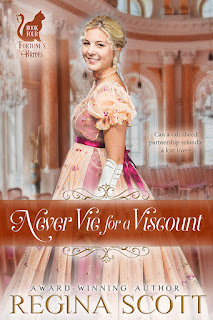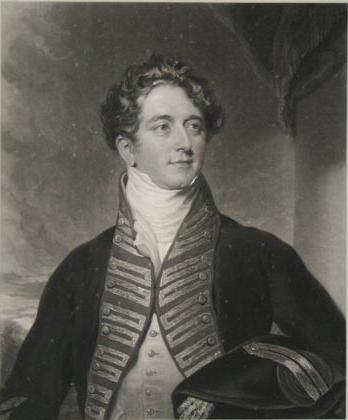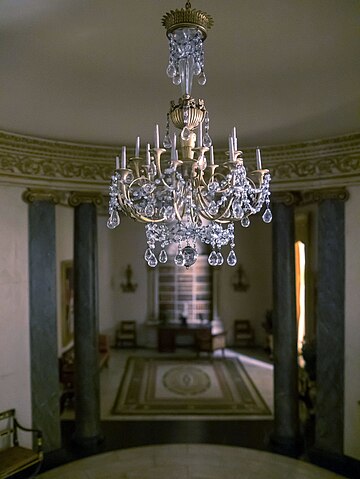
Literature wasn’t the only thing that was influenced by the Gothic craze in
18
th and early 19
th century England.
Horace Walpole, who’d started the whole
Gothic thing with
The Castle of Otranto,
built and decorated his home, Strawberry Hill in Twickenham as a sort of fairytale
homage to the middle ages... and for the next hundred and fifty years or so, this
fanciful style fell in and out of fashion.
Even the Prince Regent himself was caught up in the early nineteenth century’s
“in” cycle of Gothic love: his splendid London home, Carlton House, featured
Gothic rooms such as the cast iron and stained glass conservatory (and it is a serious downer that he decided to demolish Carlton House and focus instead on Buckingham Palace; the existing illustrations of it are
amazing.)
Well, if it was good enough for Prinny, it was good enough for the rest of
society...and our old friend Mr. Ackermann followed suit in
The Repository with a series of
illustrations of Gothic furniture, suitable for fashionable homes
everywhere...even if your house wasn’t Strawberry Hill.

The series started in 1825, but the interest in Gothic decor was already well underway, as demonstrated by this
State Bed from the September 1823 issue. The description is interesting:
The authors who have written on the arrangement of furniture in olden times, have given to the common bed a width of six feet, and to state ones an altitude quite unknown to the present day, except as we see it exemplified in some of our very ancient mansions, whose chambers exhibit the four-post bedstead at from 20 to 30 feet in height.... The recurrence to such sources for designs of furniture for buildings in the Gothic style is to be desired, because they afford the means of assimilating them to such edifices, in accordance with the practices of the times which they are intended to imitate.
H
ere we have an
Episcopal Chair in The Repository's November 1825 issue (
...the wood is of light oak with gilt mouldings, relieved by rich crimson velvet cushions and tassels. This chair may be introduced with propriety into a church, prelate's mansion, or an extensive library.) The
Drawing-Room Chair...is light oak, and the mouldings gilt; the tracery should be filled up with velvet of the same colour as the room; perhaps it would be more appropriate if it were of rose-wood or cedar. And the
Table for a Boudoir (can I pretty please have a boudoir some day?) is also of oak or rose-wood.
This
Gothic Sofa (Ackermann, December 1825) would appear to be completely at home (so to speak) in a gothic novel, conveniently located, perhaps, for the beleaguered heroine to swoon onto...
This piece of furniture, in which the modern form is preserved, is embellished according to the style of the 13th century; or rather the parts are adapted from Gothic tracery executed at that period, so as to combine the peculiar features of Gothic art with the form that is now considered to afford the best accommodation for its purpose.)
I do like the griffin-like beasts guarding the pedestal of this
Gothic Table from March 1826, as well as the illuminated manuscripts and books so artfully displayed on its surface...because of course, doesn’t everyone just have to have a table like this to display their 14th century psalter collection? Somehow this plate really brings home that these plates are truly advertisements
—that they are selling a "look" to which readers longing to be fashionable should aspire.
More delicious
Gothic Chairs...I find the right-hand chair with the blue seat to be most interesting, as it marries aspects of the previously fashionable Classical influence with Gothic decoration. I think I'll skip the middle one, though, as it doesn’t look very comfortable. (
The Repository, May 1926)
And to end on a high note (see what I did there? ☺) we have
An Horizontal Grand Pianoforte (July 1826’s
Repository). Even the editor who wrote the descriptive copy accompanying the plate is forced to recognize the irony of decorating a pianoforte, a relatively recent invention at the time, in the style of many centuries past:
This instrument being totally unknown to our ancestors, and only invented within the last half century, we can merely decorate the given forms by traceries and other Gothic ornaments best calculated to assist the sound, and to fulfil the intent of the instrument.
I’ll post more Gothic furniture in coming weeks...which was your favorite?





















































